New material returns to its original shape even when cut into pieces
A shape-memory hydrogel that also has self-healing properties has been developed by scientists in China. The new material can repair itself and return to its original shape even after being cut into segments.
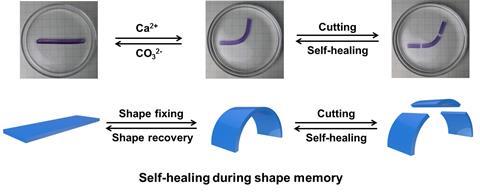
Both self-healing and shape-memory polymers have many potential uses, including in aerospace, textiles and biomedicine. Now, a team lead by Tao Chen and Jiawei Zhang from the Ningbo Institute of Material Technology and Engineering has developed a material that combines both of these useful properties.
The hydrogel is produced by polymerising acrylamide in the presence of a boronic acid-grafted alginate and poly(vinyl alcohol). After immersion in calcium chloride solution, the polymer is strengthened by the reversible double network of boronic acid-diol ester bonds, and chelation of the alginate chains with the calcium cations.
The researchers showed that straight strips of the polymer could be bent into ‘U’ and ‘N’ shapes, and then switched between these forms by adjusting the pH and the concentration of calcium ions in the surrounding medium. Unlike many other shape-memory polymers, heat is not required to trigger the shape change. Instead, explains Chen, it is the double network that stabilises the two temporary shapes, and enables the polymer to return to its original form. ‘Just like wrinkled clothes need ironing – heat – to get back to the flat state, most shape memory polymers are thermo-responsive.’ he says. ‘However, heat is not a convenient trigger in practical biomedical applications. In our work supramolecular interactions are applied as crosslinks to fix temporary shapes, enabling a triple shape memory process independent of heat.’
The team also demonstrated that once fixed into a temporary ‘U’ shape, the hydrogel could be sliced into three separate pieces capable of growing back together, while retaining the ability to return to the original linear form.
Patrick Théato, an expert on polymer chemistry based at the University of Hamburg in Germany, says the unusual properties of the material make it ideal for use in biomedicine. ‘Because stimulation beyond heat can be applied, [these] materials could be promising candidates in biomedical applications such as guide wires for catheters,’ he says.
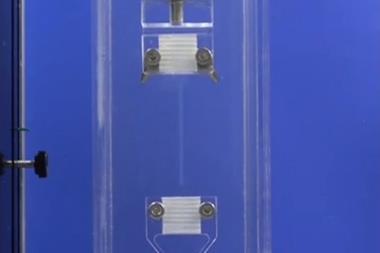
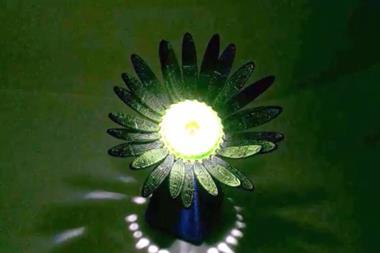

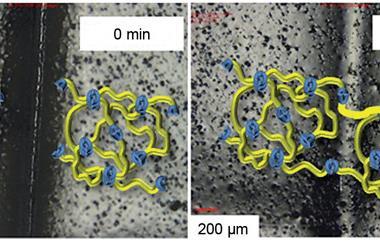
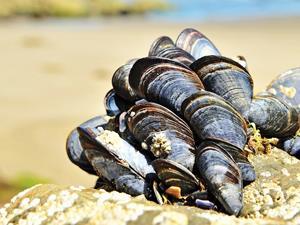






No comments yet